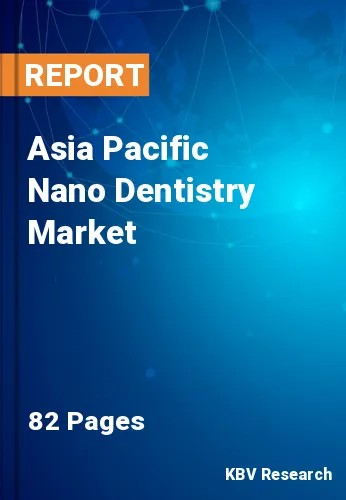The Asia Pacific Nano Dentistry Market would witness market growth of 11.4% CAGR during the forecast period (2022-2028).
Ceramics are broadly utilized in prosthodontics, which dentists can use to develop dental heads and dentures, even though they deliver a high level of durability and low electrical and thermal dynamism, as they are a little fragile. Nano-zirconia nanotechnologies can be utilized to enhance the hardness and tenacity along with the more excellent corrosion resistance and translucence conferred.
Composite materials' aesthetics and durability are depended on the size of the filler solution. Moreover, nanocomposites are Barium glass, discrete silica non-agglomerate nanoparticles, and pre-polymerized contents are filler ingredients with flexible materials to enhance stability and aesthetics. Additionally, Nanotechnology is broadly utilized in individual day-to-day life, adding its usage in medicine.
With the help of nanotechnologies, it is easier to exploit and examine atoms, molecules, and chemical bonds available between multiple compounds. Therefore, nanostructures' chemical, physical, and natural elements are considered while selecting the nanoparticle for usage in the field of nano dentistry. Moreover, numerous atoms or molecules are counted to form valuable structures. Therefore, nanostructures are also utilized in the diagnosis or innovation of dentistry.
In the Asia-Pacific region, the number of highly skilled dental surgeons is rising considerably. This has increased the number of medical tourists arriving in the area for medical services. India has many dental workforces with graduates from dental colleges across the country. The nation has evolved as hub of the dental healthcare, with a considerable number of dental hospitals and dental labs. Dental tourism is rising in India because of the excess availability of skilled dentists, low-cost treatment, advanced technology, various tourist destination across the country, visa on arrival for many countries, and affordable transport facilities & quality accommodation.
The China market dominated the Asia Pacific Nano Dentistry Market by Country in 2021, and would continue to be a dominant market till 2028; thereby, achieving a market value of $113.8 Million by 2028. The Japan market is anticipated to grow at a CAGR of 10.7% during (2022 - 2028). Additionally, The India market would exhibit a CAGR of 12.1% during (2022 - 2028).
Based on Material Type, the market is segmented into Nano Ceramics, Nano Fillers, Nano Robots and Others. Based on End User, the market is segmented into Dental Clinics, Hospitals and Others. Based on Application, the market is segmented into Tooth Restoration, Dental Implants, Preventive Dentistry and Others. Based on countries, the market is segmented into China, Japan, India, South Korea, Singapore, Malaysia, and Rest of Asia Pacific.
Free Valuable Insights: The Worldwide Nano Dentistry Market is Projected to reach USD 1.5 Billion by 2028, at a CAGR of 10.6%
The market research report covers the analysis of key stake holders of the market. Key companies profiled in the report include Dentsply Sirona, Inc., Institut Straumann AG, 3M Company, Zimmer Biomet Holdings, Inc., BioHorizons, Inc. (Henry Schein, Inc.), Danaher Corporation, Mitsui Chemicals, Inc. (Kulzer GmbH), Ivoclar Vivadent AG, aap Implantate AG, and Biotronik SE & Co. KG.
By Material Type
By End User
By Application
By Country
Our team of dedicated experts can provide you with attractive expansion opportunities for your business.

